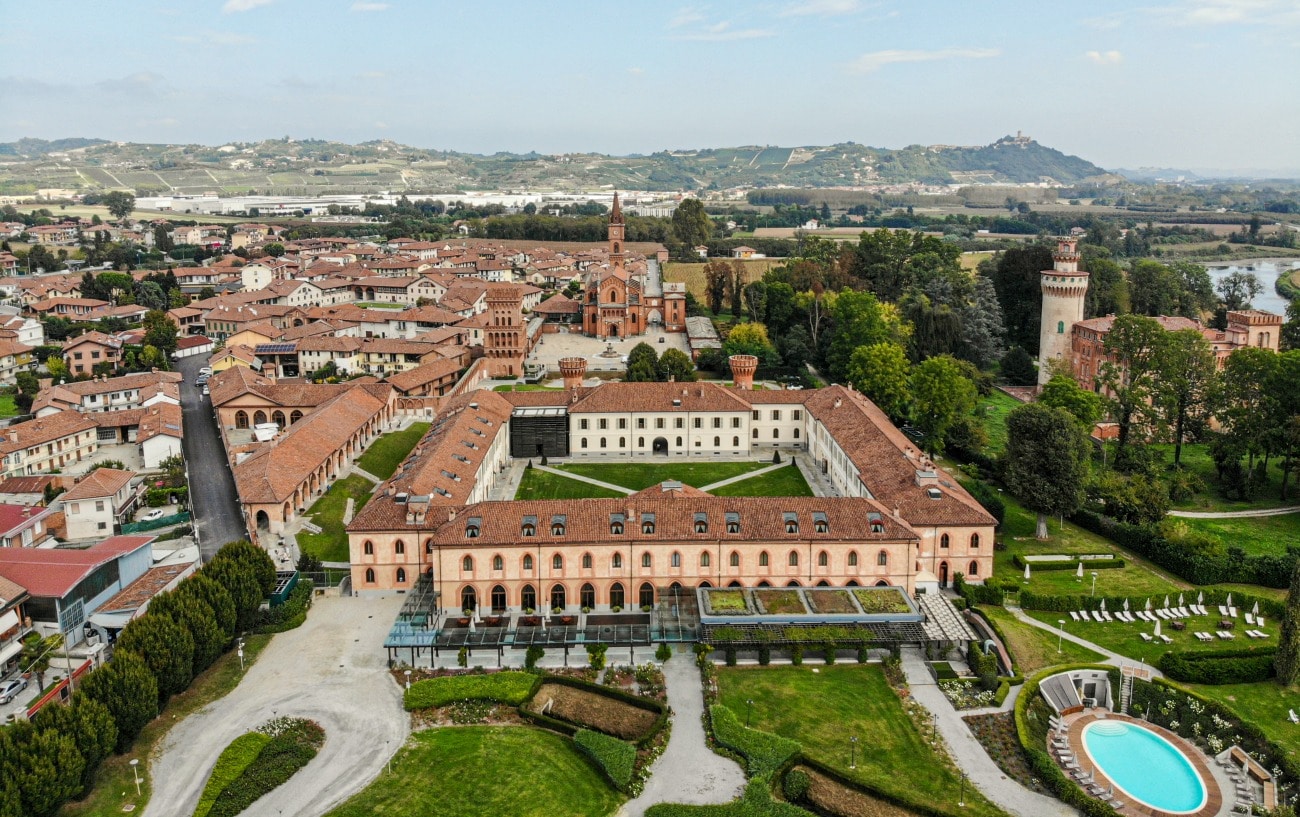It’s no secret that Italians love their cuisine and even live for it. With the global pandemic putting a big dent in our ability to travel abroad, I’m dreaming of all the delicious Italian food I am missing. What I wouldn’t give for a plate of bucatini all’Amatriciana topped with freshly grated pecorino Romano at a noisy trattoria in Testaccio. Some nights, the Sugar Fairy visits me in the form of a cannoli filled with creamy ricotta studded with colorful candied citrus, dusted with a veil of powdered sugar and softened by the Sicilian sea breeze. Though what you eat in Italy differs greatly from region to region, the unifying factors are an abundance of edible riches and an overall obsession with food.
I am well acquainted with this obsession, having spent years living in Italy. When I acquired a Tuscan husband, little did I know that a butcher, baker and winemaker were part of the pact. My husband’s kin have been frequenting the same local purveyors for generations and remain unwavering in their loyalty. They cling tenaciously to what they know best and I’m expected to eat and drink in the same manner. When you consider how delectable the food and wine of the Chianti region is, I’m not exactly complaining.
Sometimes, change is a tonic. While it’s almost impossible to get a bad meal anywhere in Italy, Pollenzo is a town in the Piedmont region that’s a gastronomic powerhouse. If you’re a food and wine lover, it should top your list of places to explore as soon as you’re ready to return to Italy.
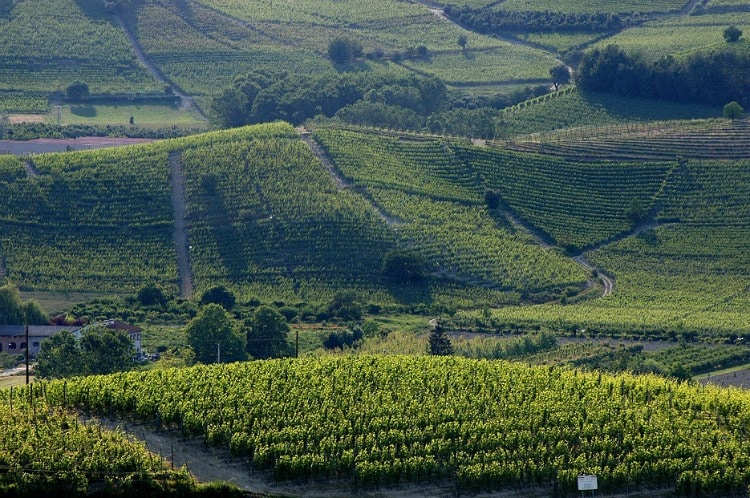
Get to Know Piedmont’s Food Traditions
To understand Pollenzo, it’s helpful to get acquainted with the foodways of the Piedmont region. This northwest corner of Italy has culinary traditions that have little in common with the rest of Italy. The cuisine is rich with butter, rice and the costly white truffle. Staples considered typically Italian, including dried pasta, tomatoes and olive oil, are not commonly used. There’s a Gallic influence courtesy of its proximity to France and generations of rule by the House of Savoy.
As in all of Italy, a meal isn’t a meal without wine. It’s an integral part of the dining table and is included in nearly every edible experience. Even young children are encouraged to take a sip. The local Nebbiolo grape is used in the famed Barolo and Barbaresco wines. Less expensive gems include the fruity, light red Gringnolino and the sparkling wines of Asti.
The Slow Food movement started in Pollenzo, so farm-to-table isn’t just a trend. Indulging in locally grown food and wine is the way it’s always been and Slow Food aims to keep it that way.
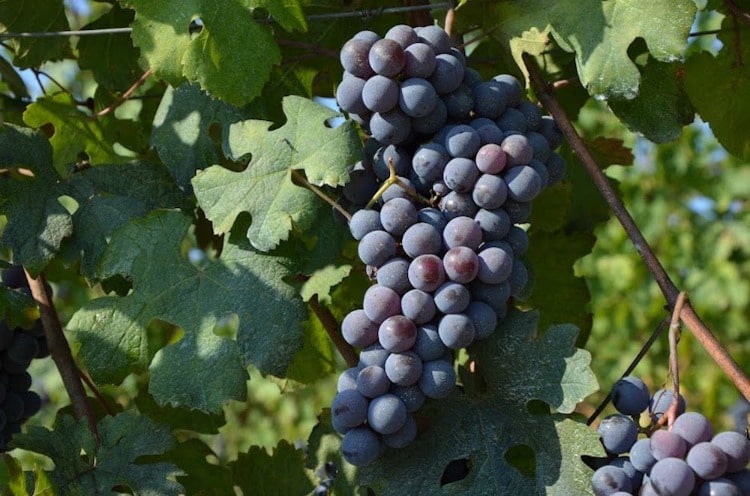
Piccolo Pollenzo has a Big Wine Scene
In the 1990s, Slow Food devised a plan to transform a property that had once belonged to King Carlo Alberto of Savoy into a unique food and wine attraction. The idea quickly gained traction, earning the support of scores and public and private partners. Today, it’s home to a mouth-watering trio of food and wine enterprises: The Wine Bank, the University of Gastronomic Sciences and the Albergo dell’Agenzia, a luxury hotel.
Sip Italy’s Cultural Heritage
It’s no exaggeration to call the Wine Bank a Disneyland for oenophiles. Slow Food founder Carlo Petrini wanted to create a reserve of Italian wines, addressing the problem that many Italian wines were being consumed before reaching their maximum potential. An example is the famed Barolo made from the Nebbiolo grape that thrives in these hills. Several wines are made from this grape but Barolo is its most mature, elegant and complex expression, giving the great red wines of Bordeaux and Burgundy some serious competition. Barolo is full-bodied and structured with plenty of acidity and tannins that will continue to develop for years in the bottle. Drink it too soon and you miss the nuances. The Wine Bank keeps these great wines until they are properly aged for maximum drinking enjoyment.
The Wine Bank contains over 100,000 bottles aging in perfect cellar conditions. You may sample up to 8 different wines each day for a reasonable cost of between 2-6 Euros per pour. The Wine Bank is currently open for business, with tastings being held outdoors and social distancing protocol in place.
As you explore the spacious cellar, instructive panels teach you everything you always wanted to know about grapes, cork, bottles and barrels.
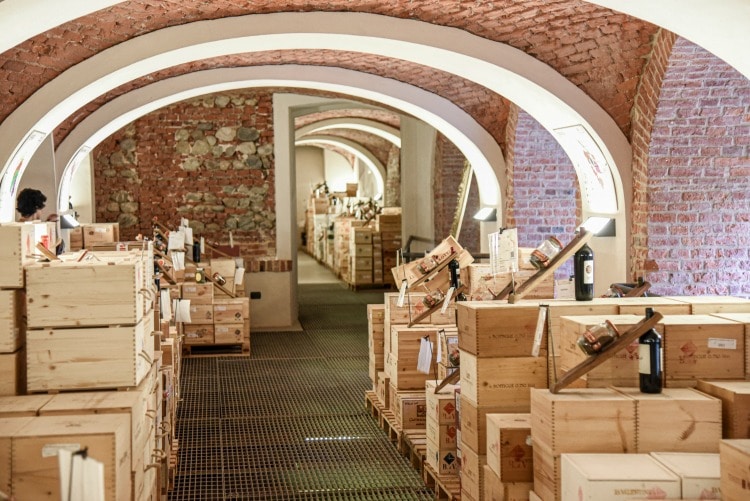
Pollenzo’s University of Gastronomy
Next door, the University of Gastronomic Sciences attracts students with a passion for food and wine from dozens of countries. The university aims to impart its graduate and undergraduate students with an understanding of the complex role that food has in shaping society. Students benefit from direct contact with producers and growers. Lectures and events are often open to the public, though COVID-19 has temporarily suspended much of the special programming. For serious foodies, it’s still a privilege to walk these halls.
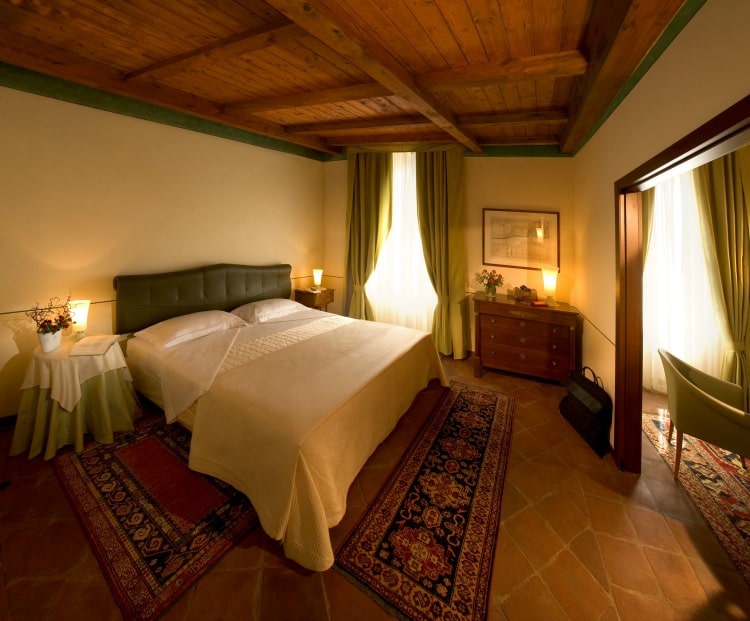
Sweet Dreams
Culinary travelers are drawn to the Albergo dell’Agenzia thanks to the gorgeous grounds and easy access to the Wine Bank and the university. Rooms offer a sophisticated atmosphere with vaulted ceilings, terra cotta floors and marble tiles. Indulge in some pampering at the wellness center or take a dip in the pool.
The hotel is the brainchild of Slow Food and eating at the onsite restaurant is a must. Every ingredient in the many dishes served is sourced nearby, in adherence with Slow Food principles. An eye-opening breakfast is also included in the room rate. It includes home-baked breads made from heritage grains, fresh out of the oven pastries, seasonal fruit, local cheeses, charcuterie and more.
Dinner is a celebration of traditional Piedmont cooking. Order the Tajarin, yellow-hued pasta ribbons made from soft wheat flour enriched with eggs. It is made fresh, as opposed to the dry, durum wheat pasta favored in central and southern Italy. The pasta is dressed with a fortifying veal sauce made of Bra sausage. The town of Bra was once home to a small Jewish community who could indulge in this pork-free product without breaking their dietary laws.
Follow your pasta course with Vitello Tonnato, thin slices of cold veal served with a zesty tuna sauce.
For dessert, treat yourself with Torta di Nocciole, a rustic cake made with fragrant local hazelnuts. End your meal with the hat-shaped Bonet, a pudding-like dessert enriched with cocoa.
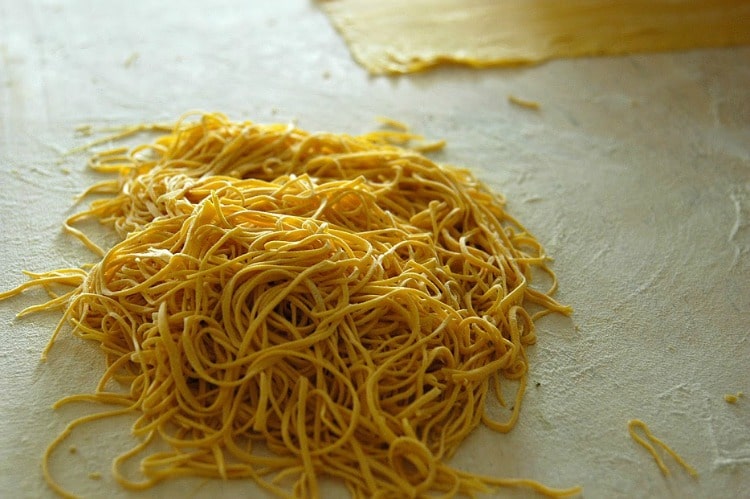
Explore Beyond Your Palate
For visitors who don’t only live to eat, the hills surrounding Pollenzo are loaded with worthy attractions.
Serralunga d’ Alba is a historically intact medieval village dominated by a Gothic-style castle. Constructed in the 14th century, it is one of Italy’s best-preserved fortified structures. Climb the stairs and enjoy majestic views of the Alps.
The compact city of Asti boasts six small museums. Explore the gilded halls of ornate Palazzo Mazzetti and view works of hometown artists including 19th-century portrait painter Michelangelo Pittatore.
Alba offers a walkable town where the famed autumn truffle fair is held. The Cathedral of San Lorenzo dominates Piazza Risorgimento, complete with a Romanesque bell tower, Gothic alter, wood-carved chorus stalls and the Madonna and Child painted by Pietro Paolo Operti.
[alert type=white]
How to Get There:
There’s an airport in Torino, but most North American visitors arrive at Milan’s Malpensa. It’s easy enough to rent a car at the airport and make the drive to Pollenzo which takes roughly 80 minutes.
Where to Stay:
Albergo dell’Agenzia – Via Fossano, 21; Ph. +39-0172-458600; www.albergoagenzia.com
What to See & Do:
The Wine Bank – Piazza Vittorio Emanuele, 13; Ph. +39-0172-458418; www.bancadelvino.it/en
The University of Gastronomic Sciences – Piazza Vittorio Emanuele, 9; www.unisg.it/en
Castle of Serralunga d’ Alba – Ph. +39-0173-613358; www.castellodiserralunga.it/en
Palazzo Mazzetti – Corso Vittorio Alfieri, 357; Ph. +39-0141-530403; www.palazzomazzetti.eu
The Cathedral of San Lorenzo, Alba – Via Vida, 1; www.cittaecattedrali.it/en
[/alert]

